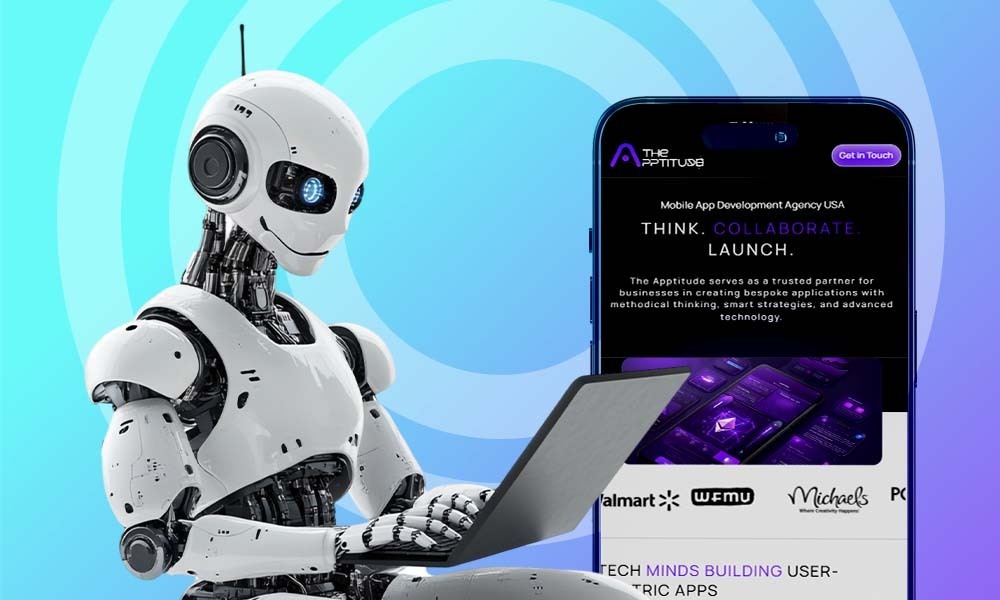
The whole ecosystem of Apple is constantly evolving, and so should the developers building for it. With each new iOS update comes a host of intelligent features entering the space. From on-device assistance to spatial computing, the changes are incredible and downright accelerating. All of this makes it extremely important to keep up with the trends and prepare for the future beforehand.
To help you with it, we curated this blog with the best iOS app development AI trends and tips that you absolutely need to work with. This will help you prepare for what is to come and build great apps for Apple’s ecosystem. In case you need more help, you can always collaborate with a reliable iOS app development company.
Coming back to the topic, the future of iOS app development is more about Artificial Intelligence (or as Apple likes to call it, Apple Intelligence), better privacy, and multi-platform compatibility. You should also learn more about them if you are building iOS-focused AI app development services. Take a look at these 5 trends to build fast, intuitive, and future-ready applications.
1. On-Device AI
For quite a while now, Apple has been steadily integrating AI, and moving forward, it is not just about fancy looks or better battery performance. The latest updates from Apple, introducing the Neural Engine and Core ML, have made iPhones capable of running AI models locally. This means better personalization, privacy, and performance that cloud systems cannot deliver.
Apple has already been building these technologies into devices like Siri processing, Notes transcription, and Live Speech. For creators, the magic lies in the Core ML, Create ML, and the Personal Intelligence APIs. It enables light, powerful, and intelligent automation integrations into the apps. The machine learning and artificial intelligence features work locally, and results show features that feel more native and don’t require a stable connection to work. To become the best iOS app development company USA, it is important for companies to embrace this first.
2. Improved Privacy
Privacy is no longer just a side feature these days; it is now expected to be a separate entity working to defend the users, and Apple is working hard at it. People want to browse and operate without worrying about losing their data or having their lives exposed. Apple is clearly emphasizing privacy labels, local processing, and many more things to ensure apps that need an internet connection are safe.
This opened doors for smarter offline working. Creators are now careful about how much content is live, and also the offline modes. This is possible when AI and privacy are mixed to provide a better yet safer experience.
3. Conversational AI
The way users interact with their phones is changing over time. From long hours searching through browsers and writing long texts to telling the phone what to do, and getting answers talked back (or shown). This is all thanks to Siri and voice interfaces.
In 2025, voice interactions are two-ways. Conversational AI is becoming deeper, and it is now a big part of any iOS mobile app development, especially when it is about accessibility and hands-free productivity. Apple has highly enhanced on-device speech recognition and voice shortcuts. Apps can now understand voice commands locally and even process and respond to them. Users can expect more personalization and interaction, whether they want the phone to dictate a document, use voice for navigation, or just talk to their phone.
4. Modern Frameworks
Apple introduced Swift as a future platform for a more unified development stack. It is now a more advanced, truly cross-platform language for frameworks like SwiftUI and SwiftData. This allows creators to easily build apps for iOS and other Apple platforms. Also, it enables writing code once and deploying everywhere.
These platforms are well-integrated into Apple’s ecosystem. They enable the system features such as accessibility, dark mode, animations, localisation, and other features. This makes the app feel and look more native, enhanced, and seamless. All these updates also make iOS app development easier for smaller teams. Instead of working with different frameworks and platforms, you just have to deal with a single unified one that is ready to scale. Although Swift, SwiftUI, and SwiftData are far from perfect, they are the most future-ready choice.
5. Support for VisionOS
Apple introduced Apple Vision Pro also known as VisionOS in 2023, its first step into spatial computing. It combines iOS AI app development USA concepts with a fresh and new UX. It brings about 3D interfaces, spatial input, and a canvas that feels like real life. Users can place apps and build interfaces of their choice. Also, navigation uses gestures, voice commands, and eye tracking.
This is the new norm for app developers wanting to be future-proof. And, if you are familiar with SwiftUI, the transition will feel much smoother. Since the future is more and more shifting towards such experiences, it would be best to learn the technicalities and start applying them to your apps.
Final Takeaway
The iOS mobile app development industry is changing all the time, or should we say, evolving. If you want to make an impact in the world and scale your apps, the ideas from two or three years ago will not cut it. This is exactly what we talked about here.
The mobile app industry trends we talked about here can make or break your success. So, in order to win big, you can treat the 2025 iOS app development AI trends as a blessing in disguise. For some extra help, it is best to collaborate with an iOS app development company in USA. You can discuss your needs and the team will help you navigate the deep waters with ease through reliable AI app development USA.
Well, we didn’t say that you should implement every single one of them in every app. These are just to enlighten you on how the market is shifting and keep you ahead of the curve. Based on our research and experience, the above 5 trends will dominate 2025.

